The ultimate guide on Salesforce flow in 2023 [Updated]
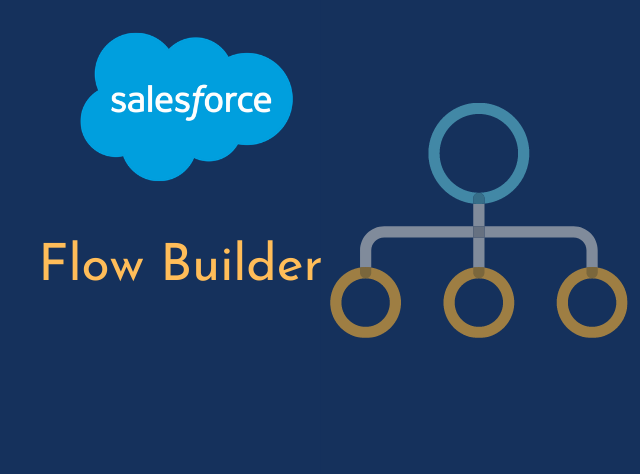
Flow Builder
Salesforce Flow Builder is an inbuilt automation tool offered by Salesforce which is used to automate complex business processes such as sending an email, executing logic, interacting with the Salesforce database, call Apex classes and collect data from users, etc. Also, It can be used to build code-like logic but without using a programming language by just drag and dropping elements.
As an admin, Flows are going to be the user’s best friend because the user will be able to handle the majority of complex business requirements without the help of a Salesforce developer.
How Do You Call a Flow in Salesforce?
Initiating the Flow Process, also known as calling a Flow, allows you to perform a variety of actions such as modifying Salesforce records, scheduling emails, and executing Apex classes. There are many other tasks that can be accomplished through the use of Flow.
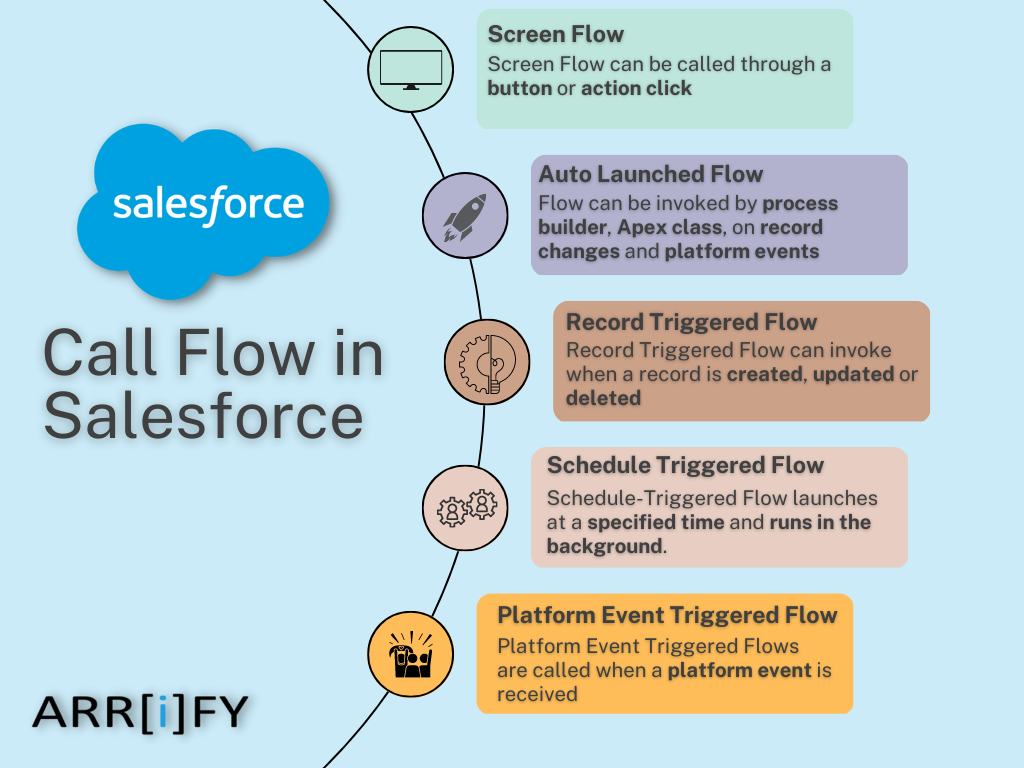
When creating a new Flow, a pop-up window will appear allowing you to select the type of Flow you want to create.
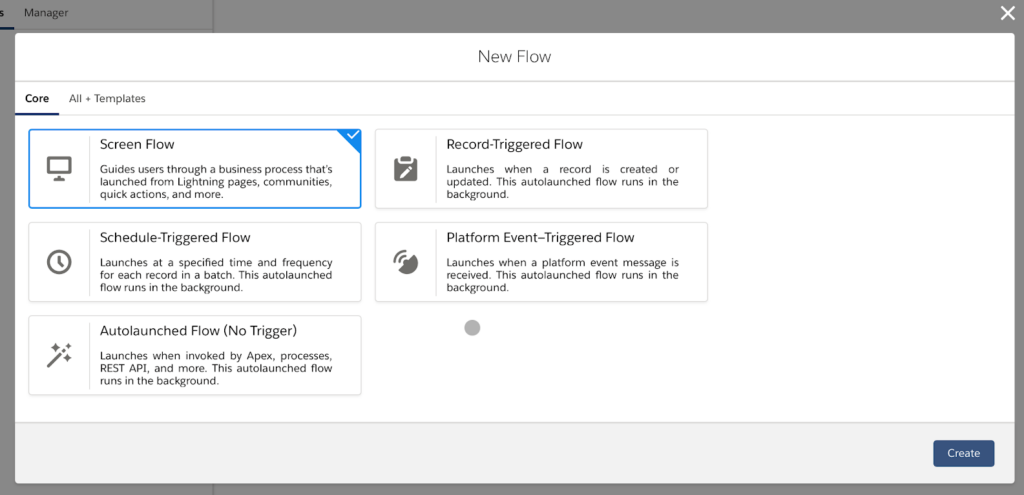
Flow is divided into five parts as Shown above image :
Screen Flow
These types of flows have a user interface element (which can interact with the user) and allow users to put inputs.
Screen Flow can be called through a button or action and displayed in a Lightning Page or the Utility Bar, as a screen to the users that they can interact. This flow cannot able to automatically called.
Auto Launched Flow
Auto Launched Flows can be used to perform actions automatically behind the scenes. With this flow, users can run automated tasks that are invoked from the process builder, within an Apex class, in case of record changes and platform events.
Record-triggered Flow
Record-triggered Flows are used to perform actions in the background when a record is created, updated, or deleted.
Schedule-Triggered Flow
Schedule-Triggered Flow launch at a specified time and they run in the background. This is useful for tasks that need to be performed daily on a set of records or take place at a scheduled time.
Platform Event-triggered Flow
Platform Event-Triggered Flows are called when a platform event is received, this flows run in the background similar to an Auto-launched Flow.
Elements of Salesforce Flow builder
Here, we explain elements of Flow builder that are visible on the screen.
Whenever users open Flow, On the left side of Flow, They will see a set of tools which is depending on the type of Flow that you are working on it.
Manager Tab
In the below image, You can see the Manager tab that contains the existing elements and New resources of the Flow (This is from an Auto-Launched Flow).
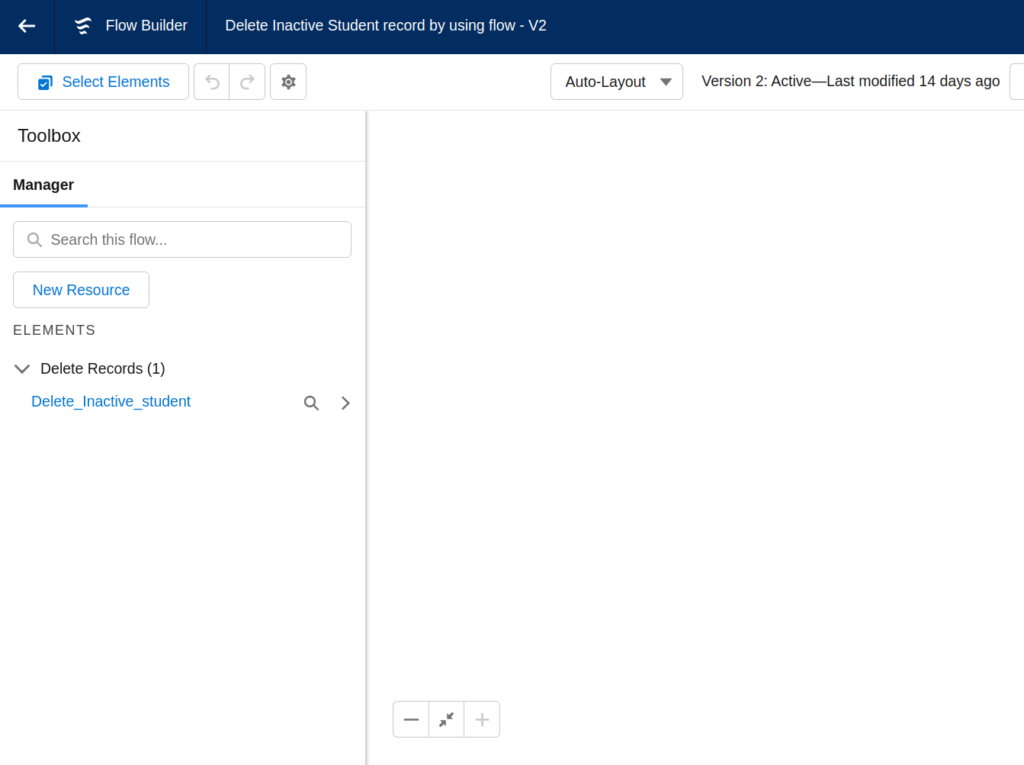
This is where your Resources like Variables, Collections, Constants, formulas, and Choices are stored.
Variables are where you can store data to use in the Flow. This can be text, number, record, dates, currency, boolean, and picklists.
Collections are a group or list of Variables that are stored together. Collections allow you to process multiple records at once in Flows.
Constants are values that you set once and never change. They are useful when you want to refer to a single value multiple times through your Flow. If you ever need to change that value, you just need to change it once and it is reflected throughout the Flow.
The formula displays a dynamic value depending on other values within your Flow. If you need to calculate a future date based on when the Flow was run then a Formula will be helpful.
Choices are used within Screen Elements to display an option to the user.
Elements Tab
Next, you have the Elements tab. In the below image, you can see Interaction, Logic, and Data Elements. These are showing dynamically depending on the type of your Flow.
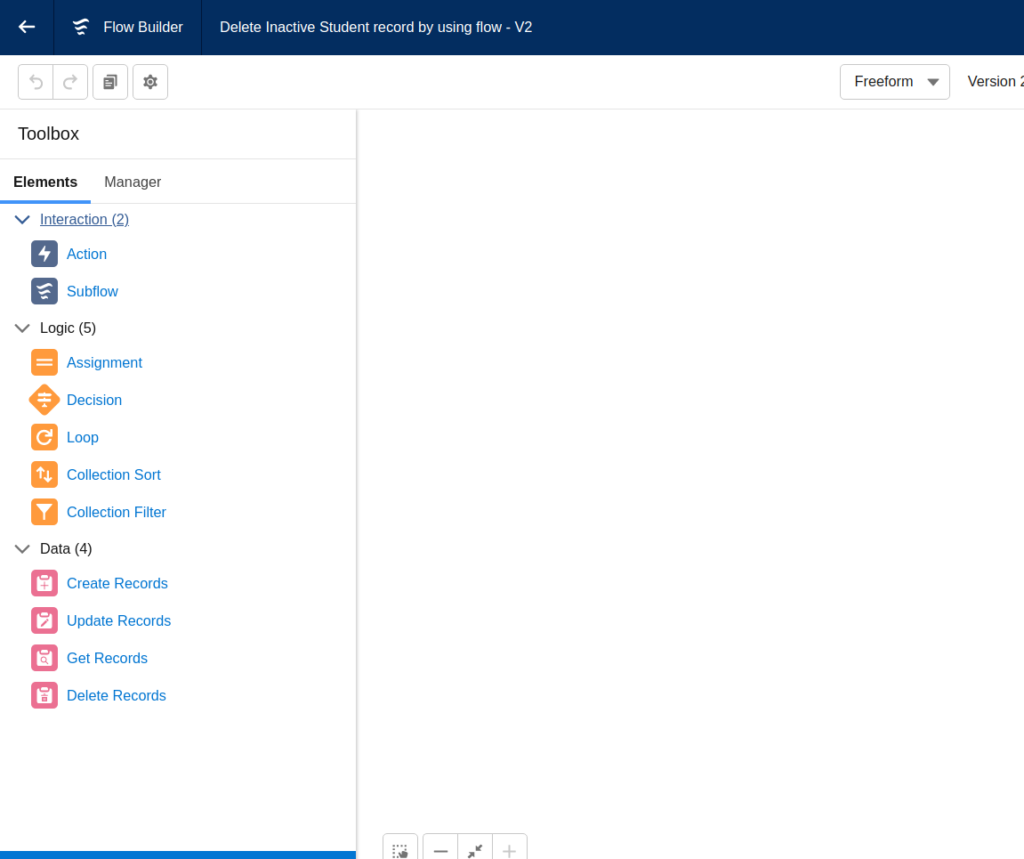
Interaction elements include Screen, Action, and Subflow
A Screen element is only available in a Screen Flow that allows a user to present a screen to another user. This screen can display information and collect information from the user.
An Action element allows you to perform some standard or custom action such as Send Email, a Quick Create, or custom Apex action.
A Subflow element allows the user to call another Flow with the help of your current Flow. This means if you have another complex Flow then you don’t need to repeat the logic in your new Flow.
Logic elements include Decisions, Assignments, and Loops
Decisions allow users to split their Flow into multiple if-else conditions depending on the data.
Assignments allow users to give a value to a variable.
Loops allow users to perform an iteration using collections.
Data elements include Create, Update, Get and Delete record
If a user wants to perform data manipulation operations into the Salesforce database then user has to use one of those Data elements.
Flow Builder Actions

Salesforce provides various types of actions in Flow builder that include :
- Create, Update and Delete records
- Loop through records
- Submit for approval
- Adding in pause or ‘Wait’ elements
- Generating PDF and send as an email
- Sending email and custom notification
- Refresh decision table
- Post to Chatter, Log a call, Task, and Event, etc.
Create Flow in Salesforce
How to Create a Flow in Salesforce?
Total Time: 10 minutes
Go to setup & search Flows
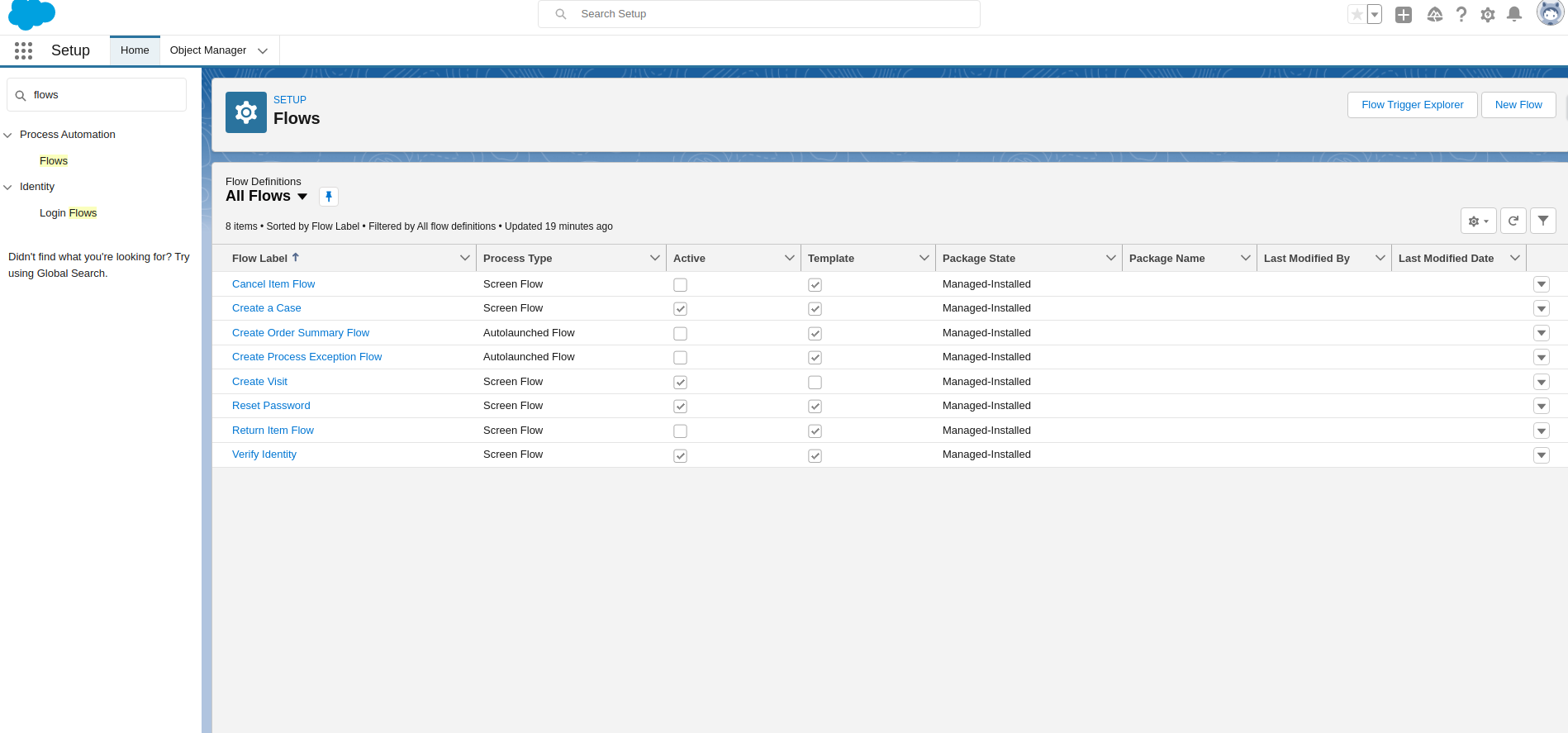
Go to setup and search Flows, click on New Flow
Select Flow Type
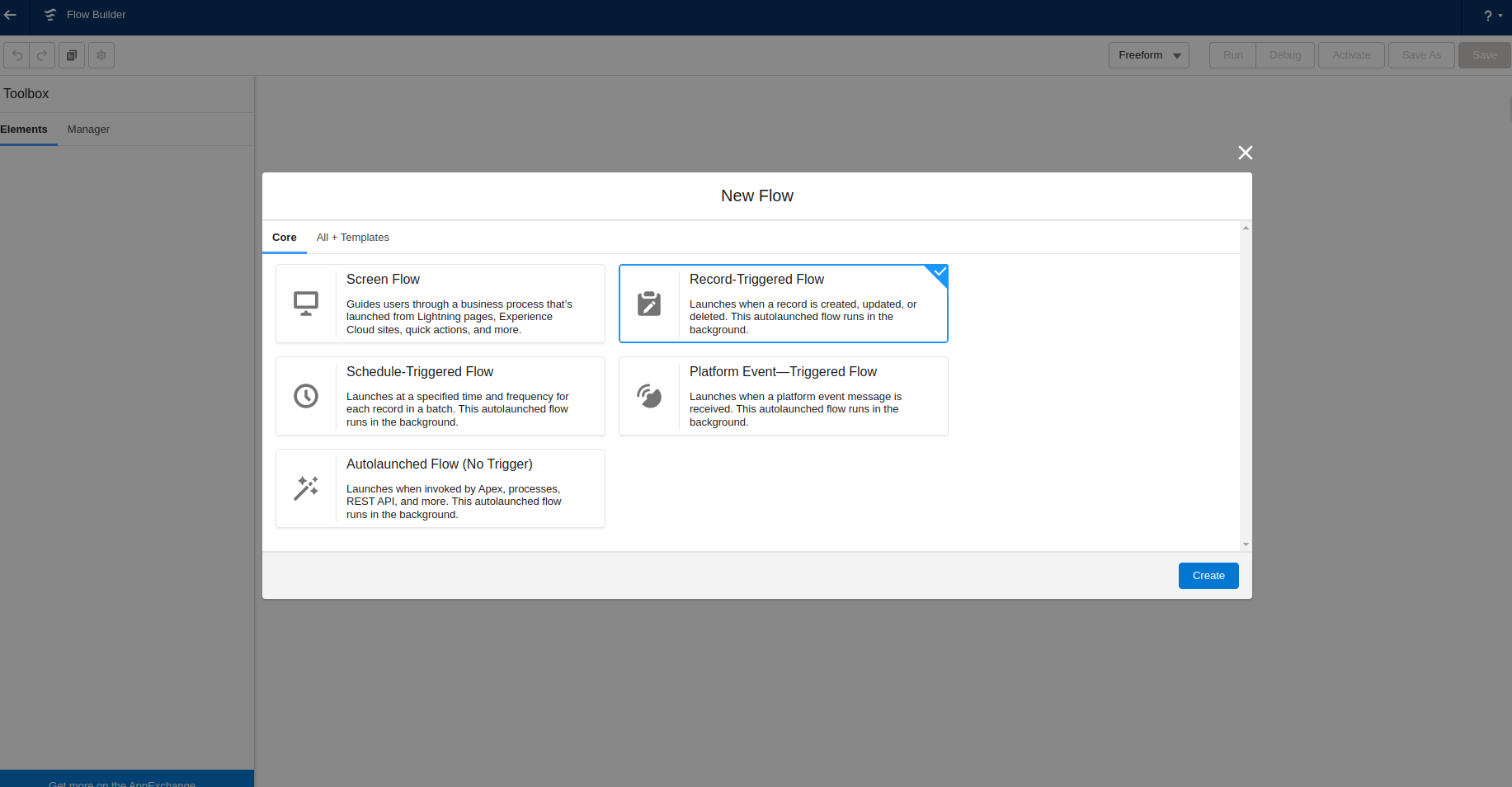
Select Flow type as a specific requirement
Set Configuration
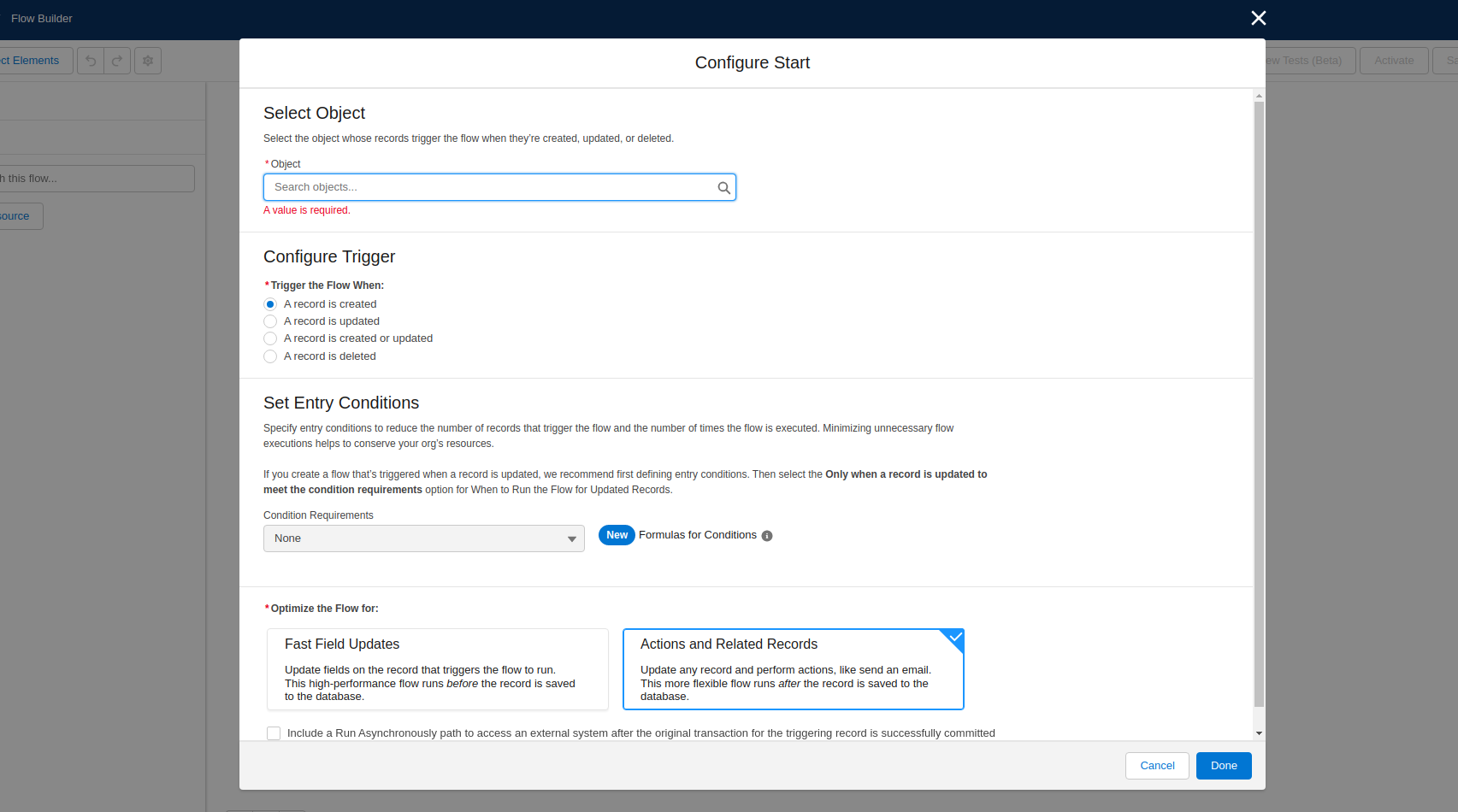
Set Configurations according to your requirements
Add Functionality
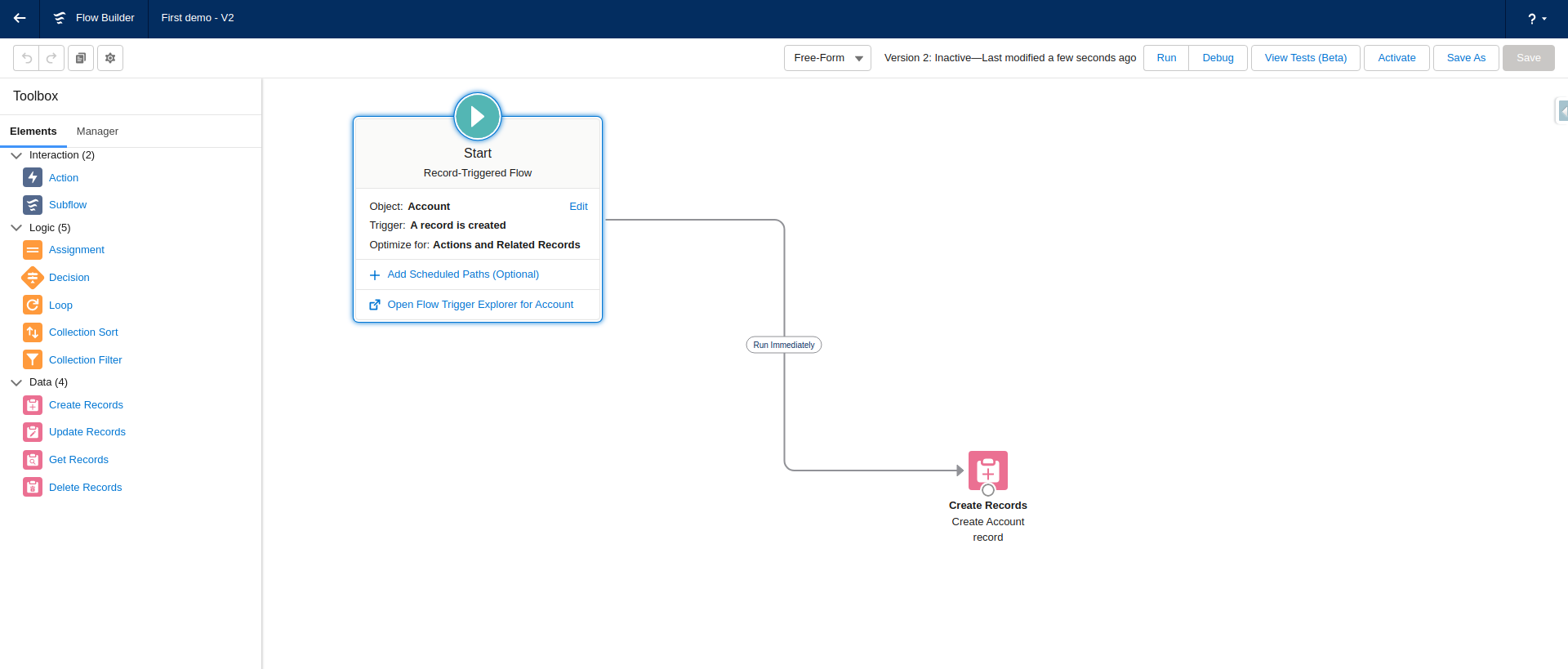
Add Functionality by just drag and dropping elements as your specific need
Save Flow
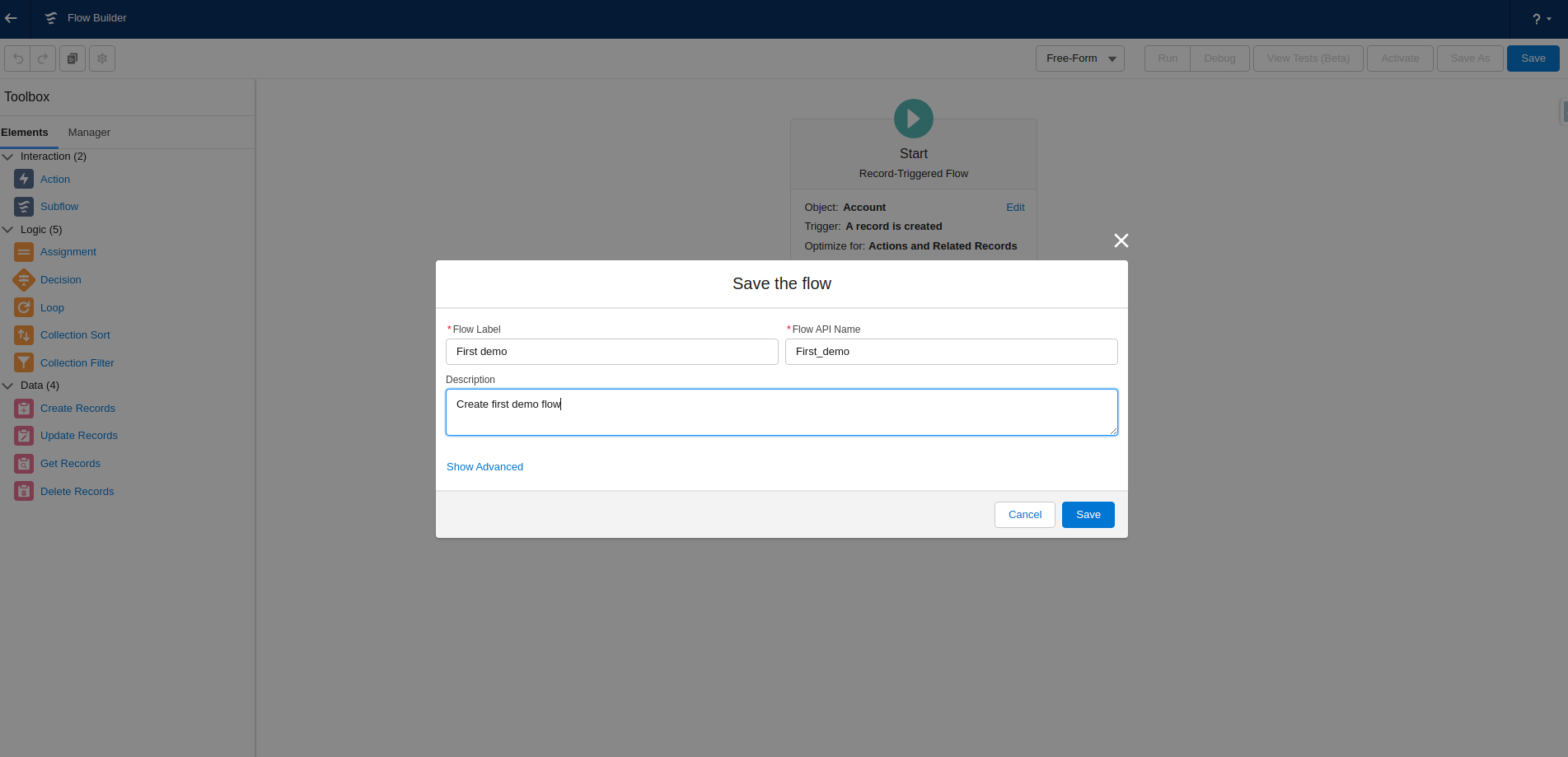
After all customization Save the Flow
Activate Flow
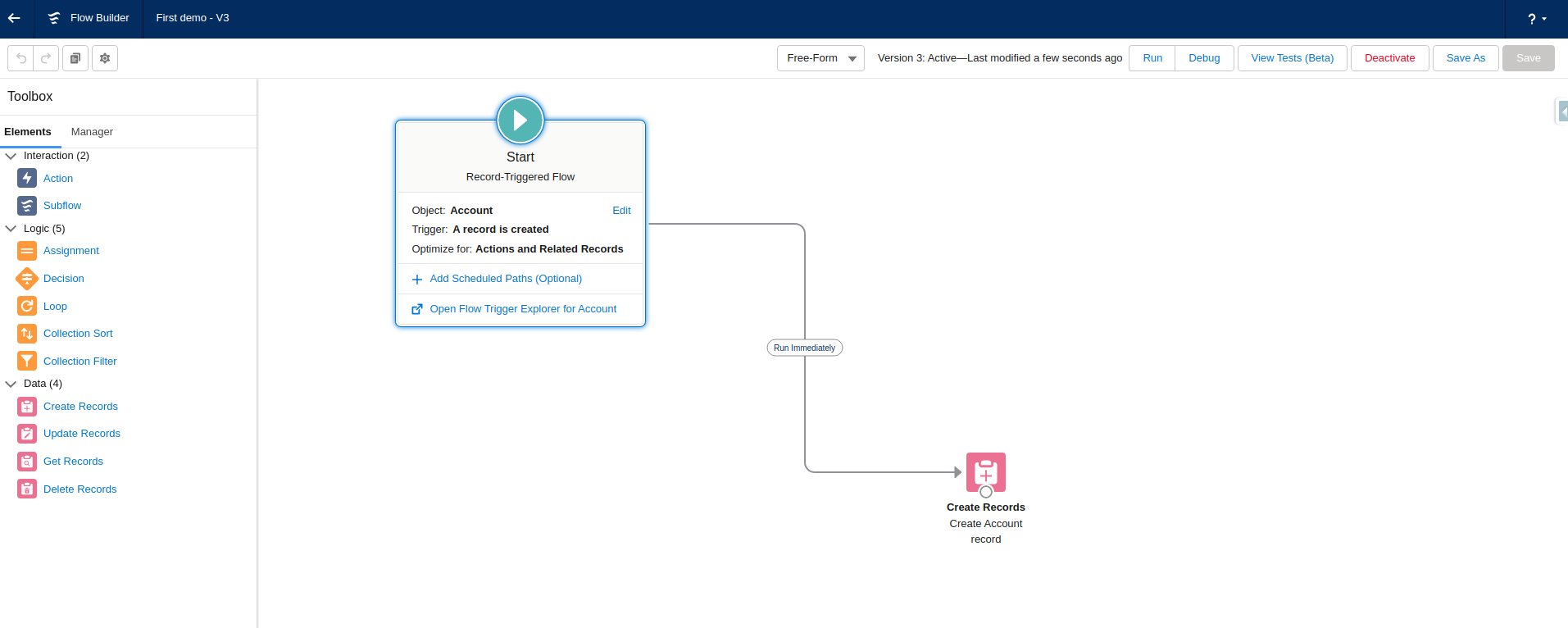
After Saving Flow, Activate the Flow
When & why should I use a flow?
Salesforce flows can be used when you need to automate complex business processes. If you need to perform mass updates or create complex logic these are some common examples for when you should use Flow.
Also, if you are not done something with workflow or process builder then you must use Flow builder for an automation. User can a lots of things Flow builder.
Key Benefits of Using Salesforce Flow
- Salesforce Flow is easy to maintain because anyone (assuming they know Flows) should be able to follow along with what you built.
- Flow support screen user interface, Thus Users can be interact with it.
- Flow allow to Query any object and also perform database operations such as Create, Update, Upsert and Delete.
- Flows can be run either before or after a record has been saved to the database but process builder trigger only after a record has been saved.
- Flow can design a logic scenario same as coding by just using drag and drop elements.
The Limitations & Considerations of The Flows?
Limitations
- In case a flow exceeds a governor limit then the complete transaction or changes made by the transaction will be rolled back.
- Flows have usage-based entitlements that determine how many flow are allocated to user per month. User can find it at Setup -> Company Information.
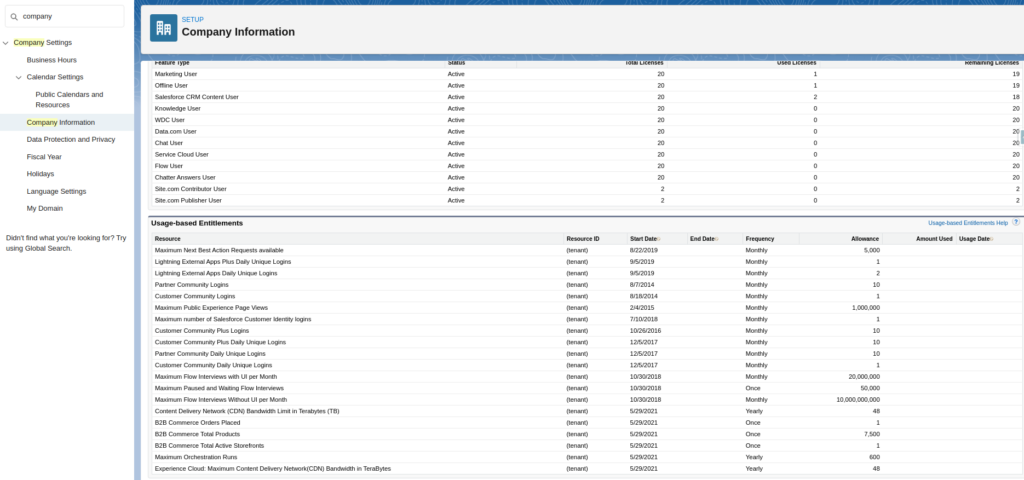
Considerations
- Flow can access the data only if the running user has permission to access the fields. In case Flow tries to update a field and the field is not editable by the user then flow will fail. This scenario can be avoided by using the setting Filter inaccessible fields from flow requests.
- Above setting can be found in Setup->Process Automation Setting.
- When a user session expires then in-progress flow will be interrupted and cannot resume again. If the flow executed actions such as record manipulations then those actions will not rolled back But run any other progress through the flow such as user data entered on the screen, will be lost.
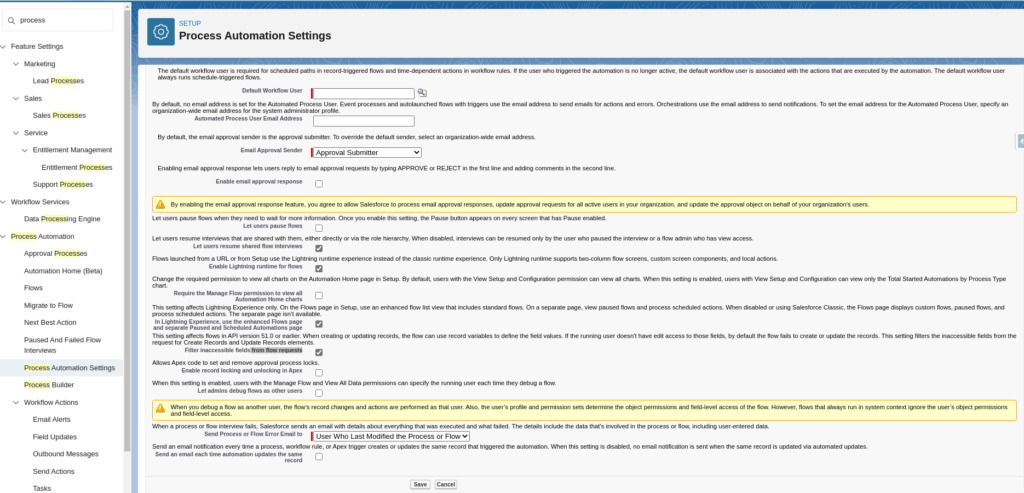
To read more about flow limits and considerations Click here
When not to use Salesforce flow?
There are a few situations where Salesforce flow may not be the best choice for automating business processes:
- Simple automation scenarios: If you only need to automate a simple process that involves a single action or set of actions based on a specific trigger, Process Builder or Workflow may be more suitable options. These tools are generally better suited for simpler automation scenarios and may be more efficient to use in these cases.
- Complex processes with many steps: While Flow is powerful and can handle complex processes, it may not be the most efficient tool for processes with many steps or a large number of decisions. In these cases, it may be better to consider alternative options such as custom code or external integration.
- Limited resources: If you don’t have the time or resources to learn and set up Flow, it may not be the best choice for your organization. Flow can be a powerful tool, but it does require some learning and setup time to fully leverage its capabilities.
- Limited budget: Flow is a part of the Salesforce platform, so it may not be the most cost-effective option for organizations with limited budgets. In these cases, it may be worth considering alternative solutions that may be more budget-friendly.
Overall, the decision to use Flow or an alternative solution will depend on the specific needs and complexity of your automation scenario, as well as the resources and budget available to your organization.
Comparison Between Flow, Process Builder & Workflow
There are a few key differences between Flow, Process Builder, and Workflow in Salesforce:
- Flow: Flow is a visual tool that allows you to automate business processes by creating and automating processes, known as “flows,” that include decisions, screens, and actions. It is often used for more complex automation scenarios that may involve multiple steps or involve user input.
- Process Builder: Process Builder is a tool that allows you to automate business processes by creating and automating processes, known as “processes,” that are triggered by specific conditions. It is often used for simpler automation scenarios that involve a single action or set of actions based on a specific trigger.
- Workflow: A workflow is a tool that allows you to automate business processes by creating and automating processes, known as “rules,” that are triggered by specific conditions. It is similar to Process Builder, but is generally used for simpler automation scenarios and has fewer features and capabilities.
Note: As of the end of 2022, Salesforce will stop supporting Workflow Rules and Process Builder automation.
Overall, Flow is typically the most powerful and flexible tool for automating business processes in Salesforce, while Process Builder and Workflow are more suited for simpler scenarios. The choice of which tool to use will depend on the specific needs and complexity of your automation scenario.
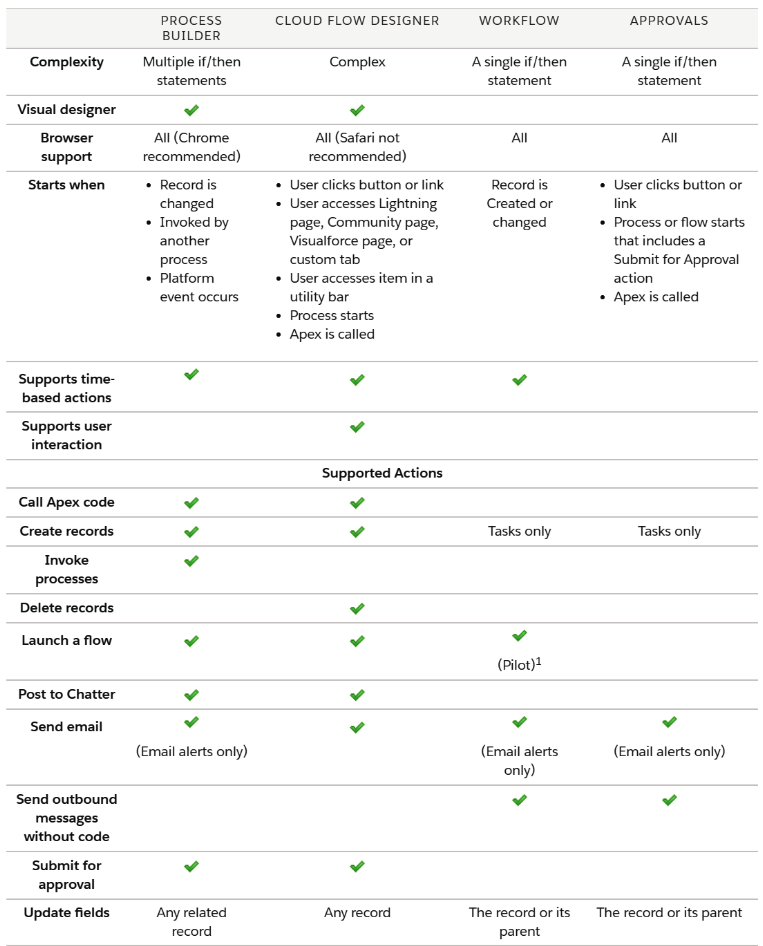
Conclusion
In conclusion, Salesforce flow is a powerful tool for automating business processes and can be a valuable asset for any organization using Salesforce. It allows users to create and automate complex processes using a visual interface, without the need for any coding. This means that even those with limited coding experience can take advantage of the benefits of automation. With the end of support for Workflow Rules and Process Builder automation in 2023, Salesforce flow is an increasingly important tool for automating processes within Salesforce.
By leveraging the full capabilities of Salesforce flow, organizations can streamline their operations, improve efficiency, and drive better business outcomes. The no-code automation capabilities of Salesforce flow make it an accessible and user-friendly tool for automating business processes, regardless of technical expertise.
